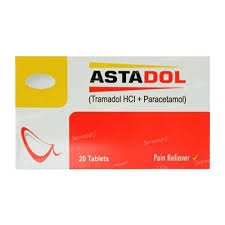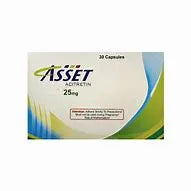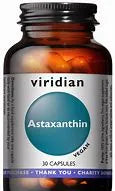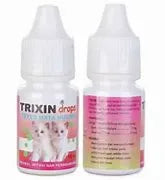Astadol combines Paracetamol (325mg) and Tramadol (37.5mg) for effective relief of moderate pain. Paracetamol reduces fever and pain, while Tramadol, an opioid analgesic, alters pain perception in the brain. Together, they provide stronger relief than either medicine alone. This medication is commonly used for post-surgical pain, musculoskeletal pain, and chronic pain conditions under medical supervision.
Uses
-
Relief of moderate musculoskeletal pain (e.g., back pain, arthritis, sprains)
-
Management of post-operative pain
-
Support in chronic pain conditions (e.g., fibromyalgia)
-
Effective in dental pain, headache, menstrual pain, and minor injuries
Dosage
-
Usual dose: 1 tablet every 4–6 hours as needed
-
Do not exceed 4 tablets in 24 hours
-
Swallow whole with water (with or without food)
-
Avoid combining with other paracetamol-containing medicines
How to Use
-
Take exactly as prescribed by your doctor
-
Do not crush or chew — swallow whole with a glass of water
-
Avoid alcohol while taking Astadol
-
Do not stop abruptly without medical advice to avoid withdrawal symptoms
In Case of Overdose
-
Paracetamol overdose may cause severe liver damage
-
Tramadol overdose may cause respiratory depression, seizures, or unconsciousness
-
Seek immediate emergency medical help
Missed Dose
-
Take as soon as remembered, unless it’s close to the next dose
-
Do not double doses
When Not to Use
-
Allergy to paracetamol, tramadol, or related medicines
-
Severe liver or kidney disease
-
History of alcohol or drug abuse
-
Current or recent use of MAO inhibitors
-
History of seizures
-
Avoid during pregnancy and breastfeeding unless strictly advised by doctor
Side Effects
Common:
-
Drowsiness, dizziness
-
Nausea, vomiting
-
Constipation
-
Headache, fatigue
Serious (seek medical help):
-
Breathing difficulties
-
Seizures
-
Allergic reactions (swelling, rash)
-
Severe abdominal pain
-
Signs of liver damage (yellowing of skin/eyes)
Precautions & Warnings
-
Do not exceed prescribed dose — risk of liver toxicity (paracetamol) and dependence (tramadol)
-
Avoid alcohol and sedatives — may cause dangerous drowsiness and breathing issues
-
Use cautiously in patients with liver, kidney, or seizure disorders
-
Not recommended for long-term use without close monitoring
Drug Interactions
-
CNS depressants (alcohol, sedatives, opioids) → enhanced drowsiness, respiratory risk
-
SSRIs, SNRIs, MAOIs → risk of serotonin syndrome
-
Blood thinners → paracetamol may affect clotting
-
Anti-seizure or psychiatric medicines → may increase risk of seizures
Food Interactions
-
Avoid alcohol — increases risk of drowsiness and liver damage
-
High-fat meals may delay tramadol absorption
-
Grapefruit juice may alter tramadol metabolism
Storage/Disposal
-
Store at room temperature, away from moisture and heat
-
Keep tightly closed, out of reach of children
-
Dispose of unused tablets via pharmacy take-back programs
Quick Tips
-
Take only as prescribed — do not self-medicate
-
Stay hydrated and use fiber-rich diet to reduce constipation
-
Avoid driving or operating heavy machinery until you know how it affects you
-
Inform your doctor of all other medications to avoid drug interactions
Laboratory Screening
-
Liver function tests (paracetamol risk)
-
Kidney function tests (drug excretion)
-
Seizure risk monitoring (tramadol may lower threshold)
-
Signs of dependency or misuse with prolonged use
Doctor’s Review
“Astadol is a useful combination for managing moderate pain when over-the-counter painkillers are not enough. It provides balanced relief but must be prescribed with caution, particularly due to the dependency risk of tramadol and the liver toxicity risk of paracetamol. Regular follow-ups are important to ensure safe use.”
— Prof. Dr. Ibrahim Shah, MBBS, FCPS
Disclaimer
This information is provided for educational and product knowledge purposes only.
It is not a medical prescription. Always consult a qualified doctor before starting, changing, or stopping Astadol (Paracetamol + Tramadol).





Reviews
There are no reviews yet.